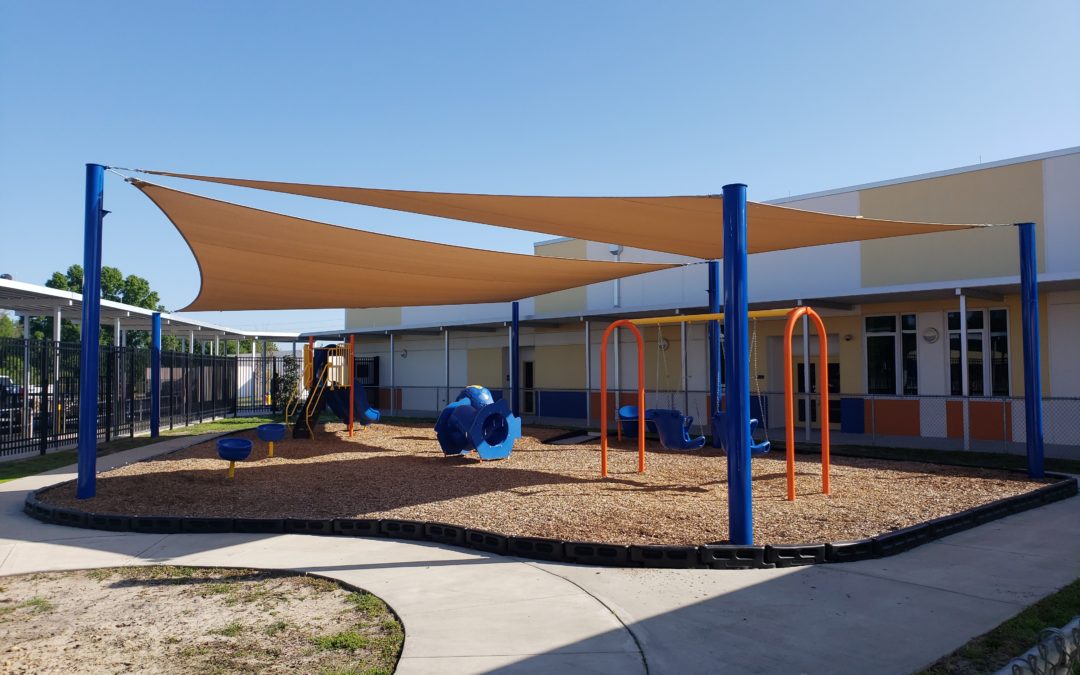Shade sails and their installation are the product of careful planning by skilled engineers and the technology that has evolved quickly in the last decade. Not only do the shade sails and structures withstand the harsh rays of the sun, they must also be strong enough to withstand high winds.
Stronger Structures
The structures that hold the shade sail in place must be strong, able to withstand high winds, and hold up to weather conditions. Proper design, engineering and fabrication should garner results for commercial structures of up to 90 mph wind loads.
UV Inhibitors
When shade sails first came into being, the fabric often suffered from UV degradation. Intense sun obliterated the fabric and it would fail after a short time. Over the last few years, as technology has progressed, and UV inhibitors have been added to the cloth during the manufacturing process to prevent or slow this. Good shade cloth now is often available with a multi-year UV degradation warranty.
Shade Factors
Shade fabrics are offered in a variety of colors and varieties but all have a Shade Factor. Shade Factor, and listed as a percentage out of 100, (100% would be complete UV blockage). This is a measure of how much a shade fabric absorbs or reflects invisible light (ultraviolet radiation). By having a standard measurement, it is easier to choose the best fabric for your project.
Stretch, Cost and Breathability
The engineering of shade sail design includes the use of the “stretch” of the knitted shade sail fabric. This helps to create the multi-level and multi-coverage needed and give the design a great aesthetic. While other fabrics can be used in some applications, (PVC, or canvas) the low cost, versatility and breathability of shade cloth makes it a best choice when looking to shade an area.
If you are interested in learning more about the technology that goes into building and installing the best shade sails, check out our page on Materials, Design, Manufacturing, and Installation. Or give us a call at 888.570.SAIL.

